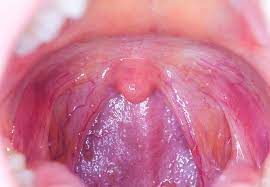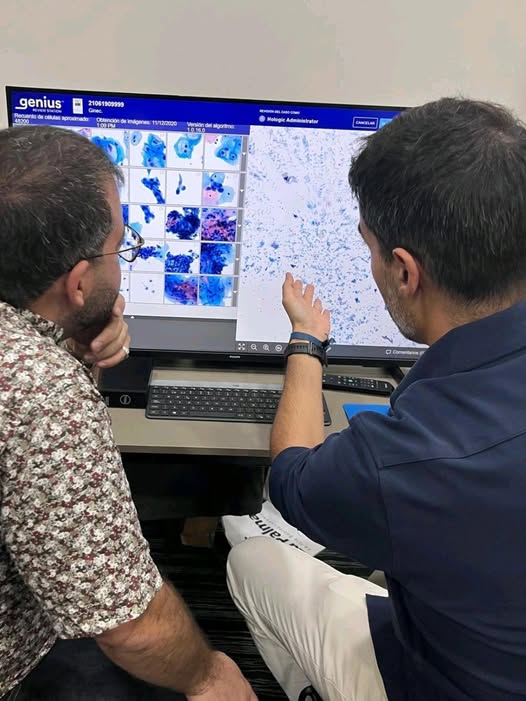A few decades ago, oropharyngeal squamous cell carcinoma (OPSCC) was associated primarily with tobacco use. The cancer’s recent surge, however, has been blamed almost entirely on the human papillomavirus (HPV), which is spread through sexual contact. In the United States, an estimated 70% of all oropharyngeal cancers are now HPV-associated; recent studies suggest that the malignancy disproportionately affects men, has surpassed cervical cancer to become the most common HPV-associated cancer, and has one of the fastest growing incidences of any cancer in high-income countries.1
In 2022, a group of six researchers outlined an optimistic plan to defy predictions of mushrooming OPSCC incidence and effectively eradicate it through “improved primary vaccine uptake, a [one]-time universal vaccination effort, and implementation of novel therapeutics that have potential to cure existing disease.”2
Other researchers say that a clear decline in cervical cancer has justified some of the hopefulness. “I think that it’s optimistic, but I think it’s something that should be strived for,” says Zain Rizvi, MD, an otolaryngologist/head and neck surgeon at UW Medicine in Seattle, Washington. “This is a public health problem and encouraging vaccination has very promising results.” In particular, he says, research is solidifying the links between vaccine uptake and the decrease in HPV-associated cervical cancer. “If we could extrapolate that to head and neck cancer, we can expect the same or a similar outcome.”
Other studies suggest that delivering on that promise, however, will require overcoming low awareness of the viral link to OPSCC, a lack of access to routine health care, subpar HPV vaccination rates, and an increase in misinformation and disinformation fueling a rise in vaccine hesitancy.
Lessons learned
HPV vaccination is now recommended for all Americans up to the age of 45 years, but rates remain far below target goals, as only approximately 55%–60% of adolescents are fully vaccinated. A Center for Disease Control and Prevention analysis suggested that HPV vaccination rates continued to tick upward in 2021 despite the COVID-19 pandemic, although the pandemic was potentially associated with concerning decreases in coverage for two other vaccine series.
The full impact of the pandemic on vaccine uptake may not yet be apparent, but a separate report has raised alarm bells about a potentially related trend: an increase in parents who are declining HPV vaccination for their adolescent children over safety concerns.4 The study found that vaccine hesitancy rates remained stable between 2012 and 2020, but the proportion of parents who cited “safety or side effects” for their hesitancy increased significantly—a trend due at least in part to the online proliferation of vaccine misinformation. That trend, other researchers suggest, has been accelerated by the COVID-19 pandemic.
One lesson learned during the pandemic is to lead discussions with patients on the safety and benefits of vaccination “before some of that misinformation has a chance to spread,” Dr Rizvi says. “That way, the first set of information that’s disseminated is accurate, scientific, and evidence-based.”
Holding those discussions, however, requires access to health care—another major obstacle to prevention. In May, Captain Christina Bell, MD, at the Womack Army Medical Center in Fort Bragg, North Carolina, presented a study concluding that “the most apparent barrier to HPV vaccination was not having a routine place to go for health care.”5 The poster presentation from the 2023 American College of Obstetricians and Gynecologists annual meeting suggested that schools could help to provide access to adolescents who lack it.
Rwanda, for example, has consistently exceeded 80%–90% coverage in its school-based vaccination campaigns over the past few years, and experts believe that the country, along with Australia, could be among the fi rst to eliminate cervical cancer. In Rwanda, a recent study documented a signifi cant drop in the prevalence of vaccine-targeted HPV types in sexually active women and thus affirmed the vaccine’s value for reducing not only HPV-associated cervical cancer but also other associated malignancies, including OPSCC.6
Benjamin Judson, MD, chief of otolaryngology at Yale University Medical Center in New Haven, Connecticut, says that the link is becoming increasingly clear. “There is a direct correlation between the number of people who are vaccinated for HPV and the reduction that we will see in HPV-associated head and neck cancers.The higher the vaccination rate, the fewer the cancers,” he says. As with HPV-associated cervical and anal cancer, early vaccination is key to prevention because of a latency that can last decades.
Beyond safety concerns, Dr Judson says that some hesitancy around the HPV vaccine is likely related to the public’s poor or incomplete understanding of the vaccine’s purpose. “It’s been thought of as a vaccine to prevent sexually transmitted diseases,” he says. “The public’s awareness that this vaccine prevents cancer is very low.” Public awareness of the link to head and neck cancers is even lower, to the dismay of many otolaryngologists.
Filling an educational gap
Dr Judson and Dr Rizvi see the gap in awareness as an opportunity to educate patients about HPV vaccination. From a 2021 study using an online survey, Dr Judson and his colleagues found that less than one third of adult respondents knew about the connection between HPV and OPSCC.7 When presented with four facts about that connection and the role of HPV vaccination in cancer prevention, however, more than half of those who initially said that they either had not or would not vaccinate their children indicated a willingness to change their minds.
“There is a direct correlation between the number of people who are vaccinated for HPV and the reduction that we will see in HPV-associated head and neck cancers.” –Benjamin Judson, MD
In a small pilot study presented in July at the International Conference on Head and Neck Cancer of the American Head & Neck Society, Dr Judson’s team followed up by surveying patients before and after a routine otolaryngology clinic visit.8 Each patient fi rst received a handout about HPV exposure, its association with oropharyngeal cancer, and the ability of vaccination to prevent HPV infection and subsequent cancers. During the appointment, the otolaryngologist spent 1 min asking each patient about his or her vaccination status and answering questions. Pre- and postintervention questionnaires revealed that the patients’ knowledge and attitudes toward vaccination improved substantially: Significantly more agreed that the vaccine is safe and stated that they were likely to vaccinate themselves and their children against HPV.
Although the primary responsibility for educating the public may not lie with otolaryngologists, Dr Judson says, his team’s study suggests that they can play a significant supporting role. Otolaryngologists also may help supply a powerful new rationale for gender-neutral vaccination that goes well beyond preventing sexually transmitted infections—often a trigger for vaccine-hesitant parents—or bolstering herd immunity by preventing the spread of HPV to unvaccinated girls or women.
As well as its potential to all but eliminate cervical cancer, the same vaccine could offer direct protection to both girls and boys against another devastating but highly preventable cancer. “I think it’s easier for us to paint the connection between the vaccination and cancer prevention because we’re otolaryngologists and so familiar with that connection,” Dr Judson says.
As for the prospects of sharply reducing HPV-associated OPSCC, Dr Judson says that he is both optimistic and worried.“I’m optimistic because we’ve seen with our research that when you talk with patients about the link between HPV and head and neck cancer, they are much more willing to vaccinate themselves or have their children vaccinated,” he says. “I’m worried about our ability to get that message out to the public.”
Educational collaborations between medical centers and professional societies could help to drive awareness; Dr Rizvi points out that otolaryngologists have already been warning patients about the link between smoking and head and neck cancer for years. The key, he says, is to widely disseminate easily accessible and digestible information about the link to HPV as well—something he believes the field could do a better job of emphasizing. For his patients, he says, “The best treatment I can probably offer is if they never have to see me for a head and neck cancer.”


